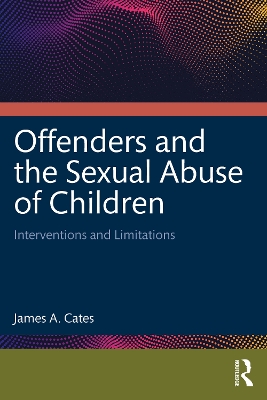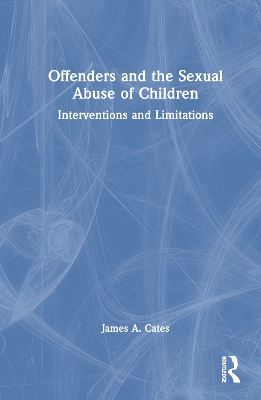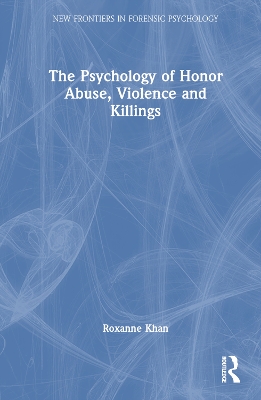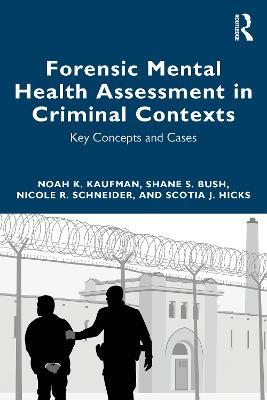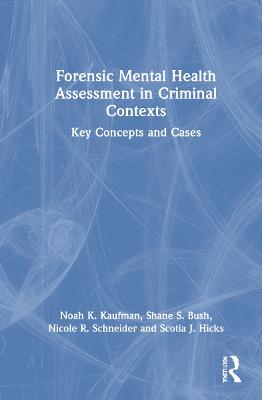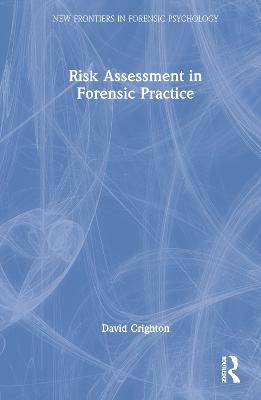Sexuality and Crime
 portes grátis
portes grátis
Sexuality and Crime
A Neo-Darwinian Perspective
Walsh, Anthony
Taylor & Francis Ltd
11/2024
124
Mole
9781032504629
Pré-lançamento - envio 15 a 20 dias após a sua edição
Descrição não disponível.
Chapter One: Bringing Biology Back In
Introduction
Biosocial Criminology
The Fallacy of Genetic Determinism
Behavior and Tinbergen's Four Questions
Chapter Two: Behavioral Genetics: Genes and Heritability
From Gene to Protein
The Concept of Heritability
Twin and Adoption Studies
Heritability in Different Environments
Shared and Non-Shared Environment
Gene-Environment Interaction and Gene-Environment Correlation
Chapter Three: Molecular Genetics and Behavior
Genetic Polymorphisms
Quantitative Trait Loci
Epigenetics
Dopaminergic Polymorphisms and Criminal and Sexual Behavior
Genetics and Human Freedom
Chapter Four: How Criminal Traits Evolve and Are Retained
Crime is Normal
Altruism
Empathy
Cooperation Creates Niches for Cheats
Detecting and Punishing Cheats
Chapter Five: Evolutionary Theories of Crime
Evolutionary Theories of Crime: Past is Prolog
Cheater and Conditional Adaptation Theories
The Gender Ratio Issue
The Age-Crime Curve
Chapter Six: Life History Theory and the Covariance of Sexual and Criminal Traits
The Basics of Life History Theory
Human Life Histories and the K-Factor
Linking Sexuality to Criminal Traits and Behaviors
The Role of the Environment on Life History Strategies
Chapter Seven: The Human Brain
The Enchanted Loom and Reinforcement Sensitivity Theory
Wiring the Brain: Experience Expected and Experience Dependent Mechanisms
Synaptogenesis as Neural Darwinism
Neurotransmitters
The Serotonergic System
Norepinephrine and Epinephrine
Testosterone and Cortisol
Chapter Eight: The Antisocial Personalities: Psychopaths and Sociopaths
Differentiating Antisocial Personality Disorder, Psychopathy, and Sociopathy
The Psychopathy Checklist-Revised
Evolutionary Considerations
The Neurobiology of Psychopathy
Neurochemistry Associated with Psychopathy
Sociopathy
Chapter Nine: The Sex Ratio, Fast Life Histories, and Crime
The Sex Ratio
Crime and the Sex Ratio
The Sex Ratio in the African American Community
The Sex Ratio, Illegitimacy, and Poverty
High Sex Ratios and Crime
References
Introduction
Biosocial Criminology
The Fallacy of Genetic Determinism
Behavior and Tinbergen's Four Questions
Chapter Two: Behavioral Genetics: Genes and Heritability
From Gene to Protein
The Concept of Heritability
Twin and Adoption Studies
Heritability in Different Environments
Shared and Non-Shared Environment
Gene-Environment Interaction and Gene-Environment Correlation
Chapter Three: Molecular Genetics and Behavior
Genetic Polymorphisms
Quantitative Trait Loci
Epigenetics
Dopaminergic Polymorphisms and Criminal and Sexual Behavior
Genetics and Human Freedom
Chapter Four: How Criminal Traits Evolve and Are Retained
Crime is Normal
Altruism
Empathy
Cooperation Creates Niches for Cheats
Detecting and Punishing Cheats
Chapter Five: Evolutionary Theories of Crime
Evolutionary Theories of Crime: Past is Prolog
Cheater and Conditional Adaptation Theories
The Gender Ratio Issue
The Age-Crime Curve
Chapter Six: Life History Theory and the Covariance of Sexual and Criminal Traits
The Basics of Life History Theory
Human Life Histories and the K-Factor
Linking Sexuality to Criminal Traits and Behaviors
The Role of the Environment on Life History Strategies
Chapter Seven: The Human Brain
The Enchanted Loom and Reinforcement Sensitivity Theory
Wiring the Brain: Experience Expected and Experience Dependent Mechanisms
Synaptogenesis as Neural Darwinism
Neurotransmitters
The Serotonergic System
Norepinephrine and Epinephrine
Testosterone and Cortisol
Chapter Eight: The Antisocial Personalities: Psychopaths and Sociopaths
Differentiating Antisocial Personality Disorder, Psychopathy, and Sociopathy
The Psychopathy Checklist-Revised
Evolutionary Considerations
The Neurobiology of Psychopathy
Neurochemistry Associated with Psychopathy
Sociopathy
Chapter Nine: The Sex Ratio, Fast Life Histories, and Crime
The Sex Ratio
Crime and the Sex Ratio
The Sex Ratio in the African American Community
The Sex Ratio, Illegitimacy, and Poverty
High Sex Ratios and Crime
References
Este título pertence ao(s) assunto(s) indicados(s). Para ver outros títulos clique no assunto desejado.
Biosocial criminology;Biopsychosocial approach;Neurocriminology;Evolutionary psychology;Social neuroscience;Criminality;Sexuality;Criminal behavior;Hypersexuality;Life history theory;Reinforcement sensitivity theory;Mating effort;Genetics;Neurobiology;Psychopathy;Sex ratio;Antisocial Behavior;Faster Life History Strategies;Fast Life History;Dark Triad Traits;Passive rGE;ANS;Low Sex Ratio;High Sex Ratio;LCP Offender;Operational Sex Ratio;Age Crime Curve;Active rGE;DNA Methylation;7R Allele;Population Specific Factors;AL Offender;ABN Mother;Fatherless Homes;Non-shared Environment;Young Men;ADHD And Borderline Personality Disorder;Psychological Altruism
Chapter One: Bringing Biology Back In
Introduction
Biosocial Criminology
The Fallacy of Genetic Determinism
Behavior and Tinbergen's Four Questions
Chapter Two: Behavioral Genetics: Genes and Heritability
From Gene to Protein
The Concept of Heritability
Twin and Adoption Studies
Heritability in Different Environments
Shared and Non-Shared Environment
Gene-Environment Interaction and Gene-Environment Correlation
Chapter Three: Molecular Genetics and Behavior
Genetic Polymorphisms
Quantitative Trait Loci
Epigenetics
Dopaminergic Polymorphisms and Criminal and Sexual Behavior
Genetics and Human Freedom
Chapter Four: How Criminal Traits Evolve and Are Retained
Crime is Normal
Altruism
Empathy
Cooperation Creates Niches for Cheats
Detecting and Punishing Cheats
Chapter Five: Evolutionary Theories of Crime
Evolutionary Theories of Crime: Past is Prolog
Cheater and Conditional Adaptation Theories
The Gender Ratio Issue
The Age-Crime Curve
Chapter Six: Life History Theory and the Covariance of Sexual and Criminal Traits
The Basics of Life History Theory
Human Life Histories and the K-Factor
Linking Sexuality to Criminal Traits and Behaviors
The Role of the Environment on Life History Strategies
Chapter Seven: The Human Brain
The Enchanted Loom and Reinforcement Sensitivity Theory
Wiring the Brain: Experience Expected and Experience Dependent Mechanisms
Synaptogenesis as Neural Darwinism
Neurotransmitters
The Serotonergic System
Norepinephrine and Epinephrine
Testosterone and Cortisol
Chapter Eight: The Antisocial Personalities: Psychopaths and Sociopaths
Differentiating Antisocial Personality Disorder, Psychopathy, and Sociopathy
The Psychopathy Checklist-Revised
Evolutionary Considerations
The Neurobiology of Psychopathy
Neurochemistry Associated with Psychopathy
Sociopathy
Chapter Nine: The Sex Ratio, Fast Life Histories, and Crime
The Sex Ratio
Crime and the Sex Ratio
The Sex Ratio in the African American Community
The Sex Ratio, Illegitimacy, and Poverty
High Sex Ratios and Crime
References
Introduction
Biosocial Criminology
The Fallacy of Genetic Determinism
Behavior and Tinbergen's Four Questions
Chapter Two: Behavioral Genetics: Genes and Heritability
From Gene to Protein
The Concept of Heritability
Twin and Adoption Studies
Heritability in Different Environments
Shared and Non-Shared Environment
Gene-Environment Interaction and Gene-Environment Correlation
Chapter Three: Molecular Genetics and Behavior
Genetic Polymorphisms
Quantitative Trait Loci
Epigenetics
Dopaminergic Polymorphisms and Criminal and Sexual Behavior
Genetics and Human Freedom
Chapter Four: How Criminal Traits Evolve and Are Retained
Crime is Normal
Altruism
Empathy
Cooperation Creates Niches for Cheats
Detecting and Punishing Cheats
Chapter Five: Evolutionary Theories of Crime
Evolutionary Theories of Crime: Past is Prolog
Cheater and Conditional Adaptation Theories
The Gender Ratio Issue
The Age-Crime Curve
Chapter Six: Life History Theory and the Covariance of Sexual and Criminal Traits
The Basics of Life History Theory
Human Life Histories and the K-Factor
Linking Sexuality to Criminal Traits and Behaviors
The Role of the Environment on Life History Strategies
Chapter Seven: The Human Brain
The Enchanted Loom and Reinforcement Sensitivity Theory
Wiring the Brain: Experience Expected and Experience Dependent Mechanisms
Synaptogenesis as Neural Darwinism
Neurotransmitters
The Serotonergic System
Norepinephrine and Epinephrine
Testosterone and Cortisol
Chapter Eight: The Antisocial Personalities: Psychopaths and Sociopaths
Differentiating Antisocial Personality Disorder, Psychopathy, and Sociopathy
The Psychopathy Checklist-Revised
Evolutionary Considerations
The Neurobiology of Psychopathy
Neurochemistry Associated with Psychopathy
Sociopathy
Chapter Nine: The Sex Ratio, Fast Life Histories, and Crime
The Sex Ratio
Crime and the Sex Ratio
The Sex Ratio in the African American Community
The Sex Ratio, Illegitimacy, and Poverty
High Sex Ratios and Crime
References
Este título pertence ao(s) assunto(s) indicados(s). Para ver outros títulos clique no assunto desejado.
Biosocial criminology;Biopsychosocial approach;Neurocriminology;Evolutionary psychology;Social neuroscience;Criminality;Sexuality;Criminal behavior;Hypersexuality;Life history theory;Reinforcement sensitivity theory;Mating effort;Genetics;Neurobiology;Psychopathy;Sex ratio;Antisocial Behavior;Faster Life History Strategies;Fast Life History;Dark Triad Traits;Passive rGE;ANS;Low Sex Ratio;High Sex Ratio;LCP Offender;Operational Sex Ratio;Age Crime Curve;Active rGE;DNA Methylation;7R Allele;Population Specific Factors;AL Offender;ABN Mother;Fatherless Homes;Non-shared Environment;Young Men;ADHD And Borderline Personality Disorder;Psychological Altruism

